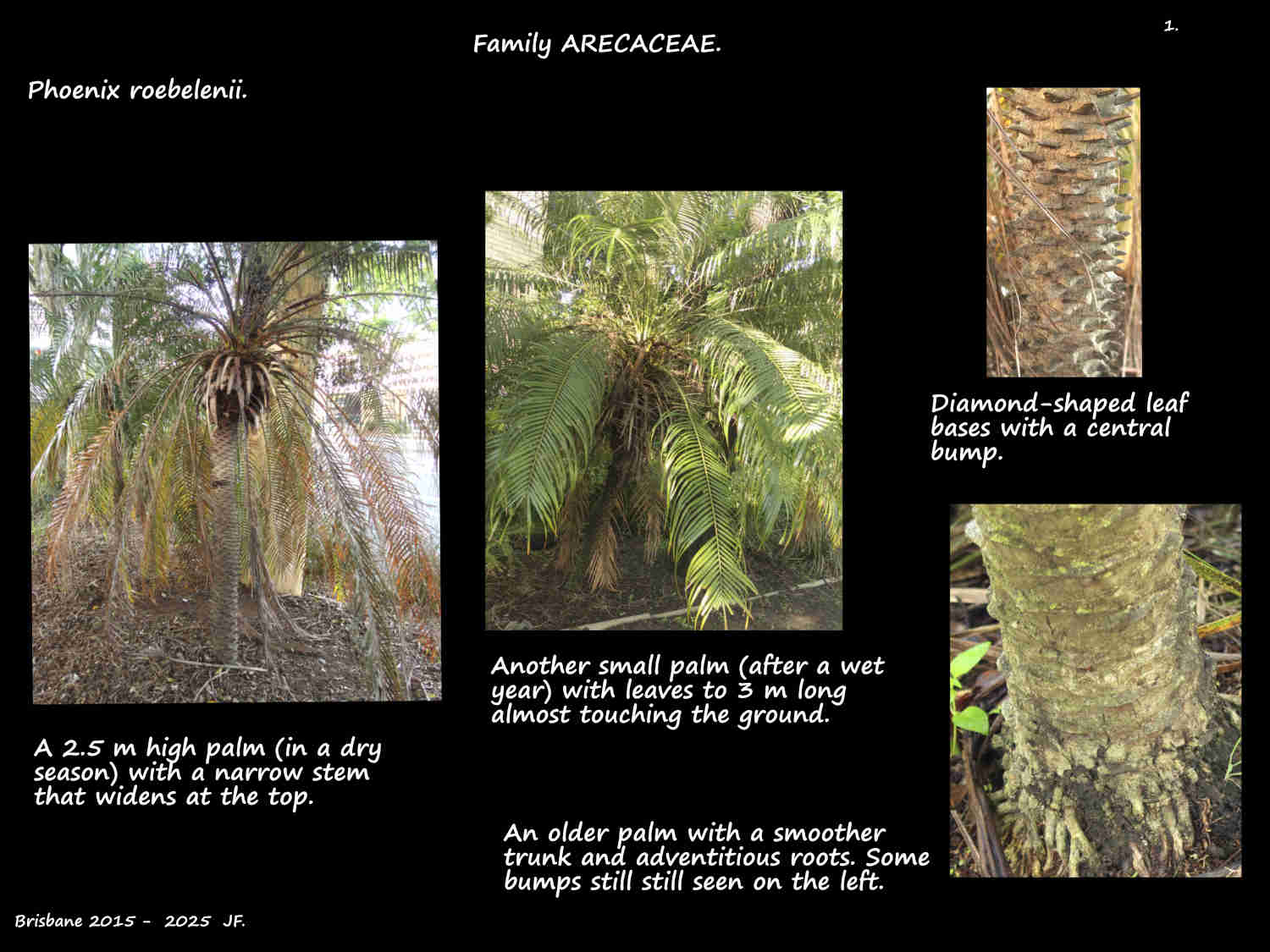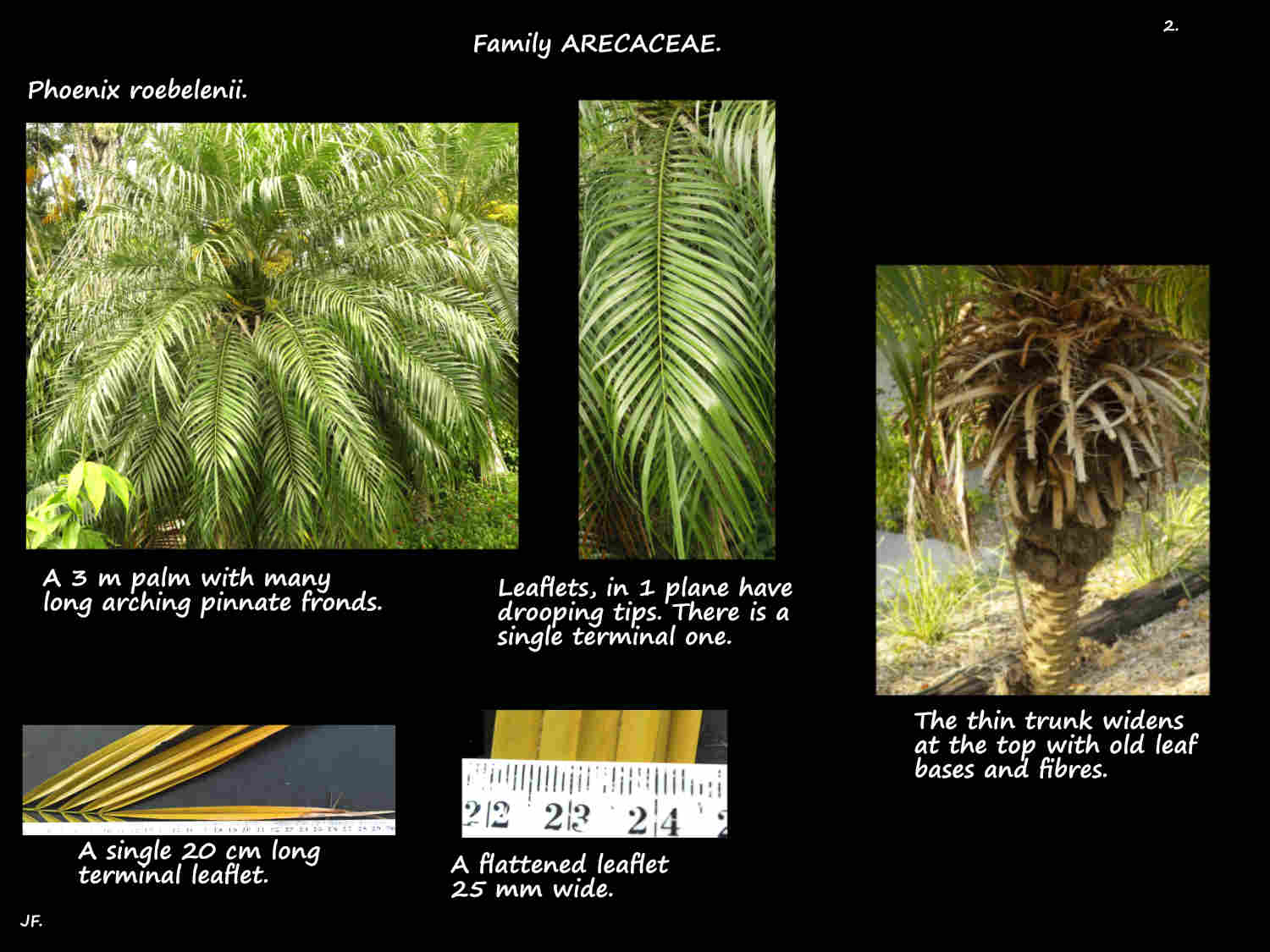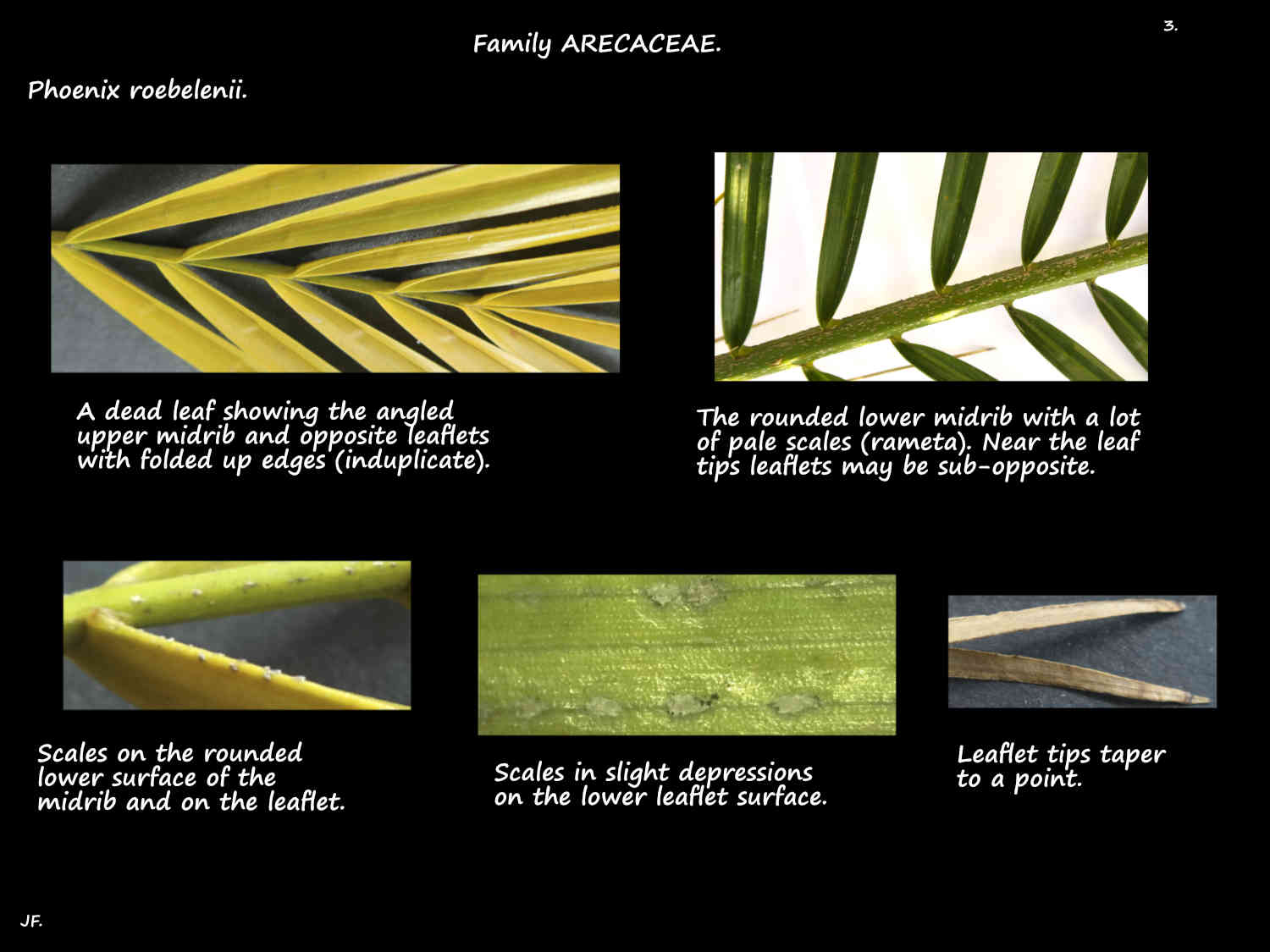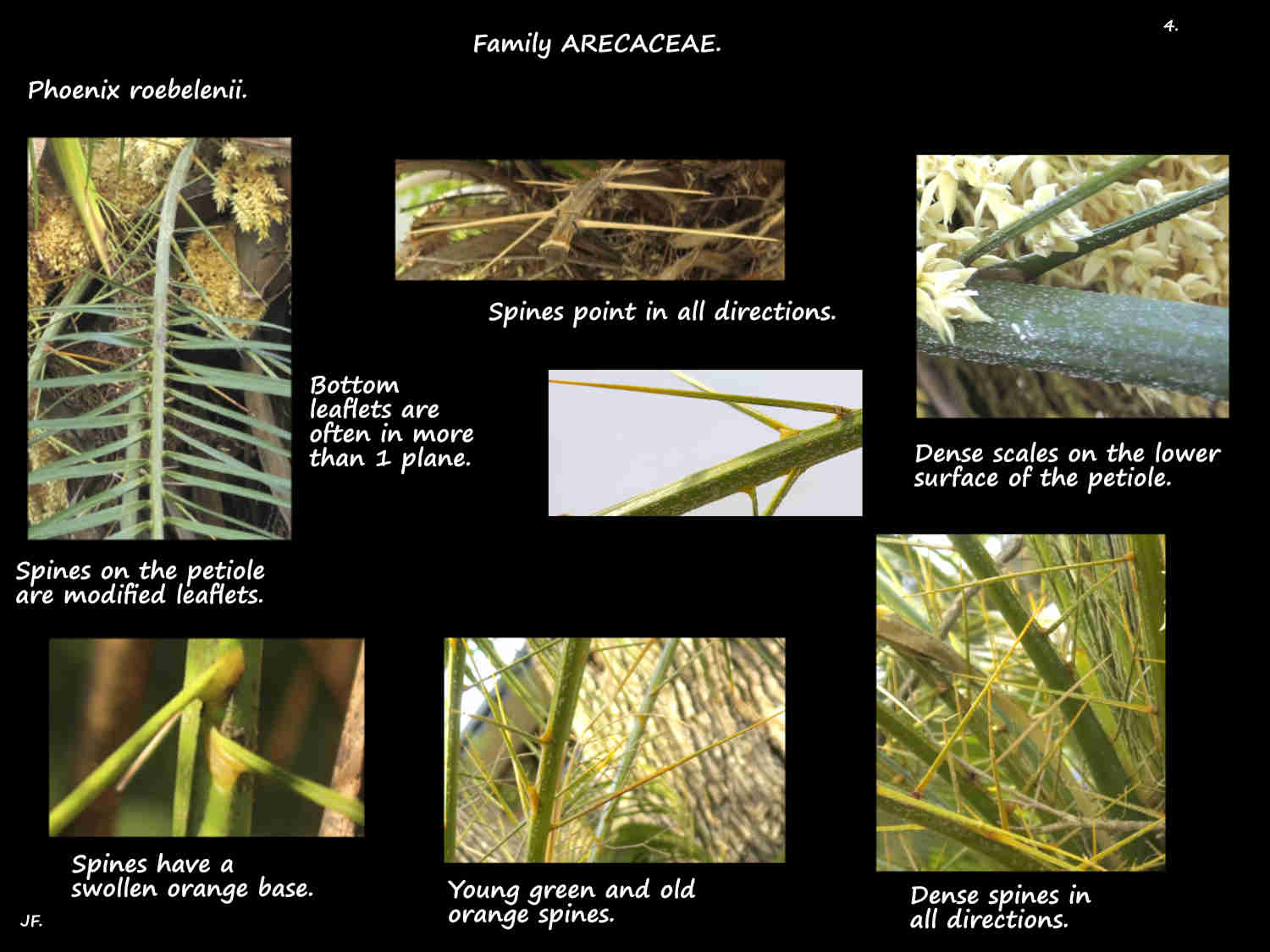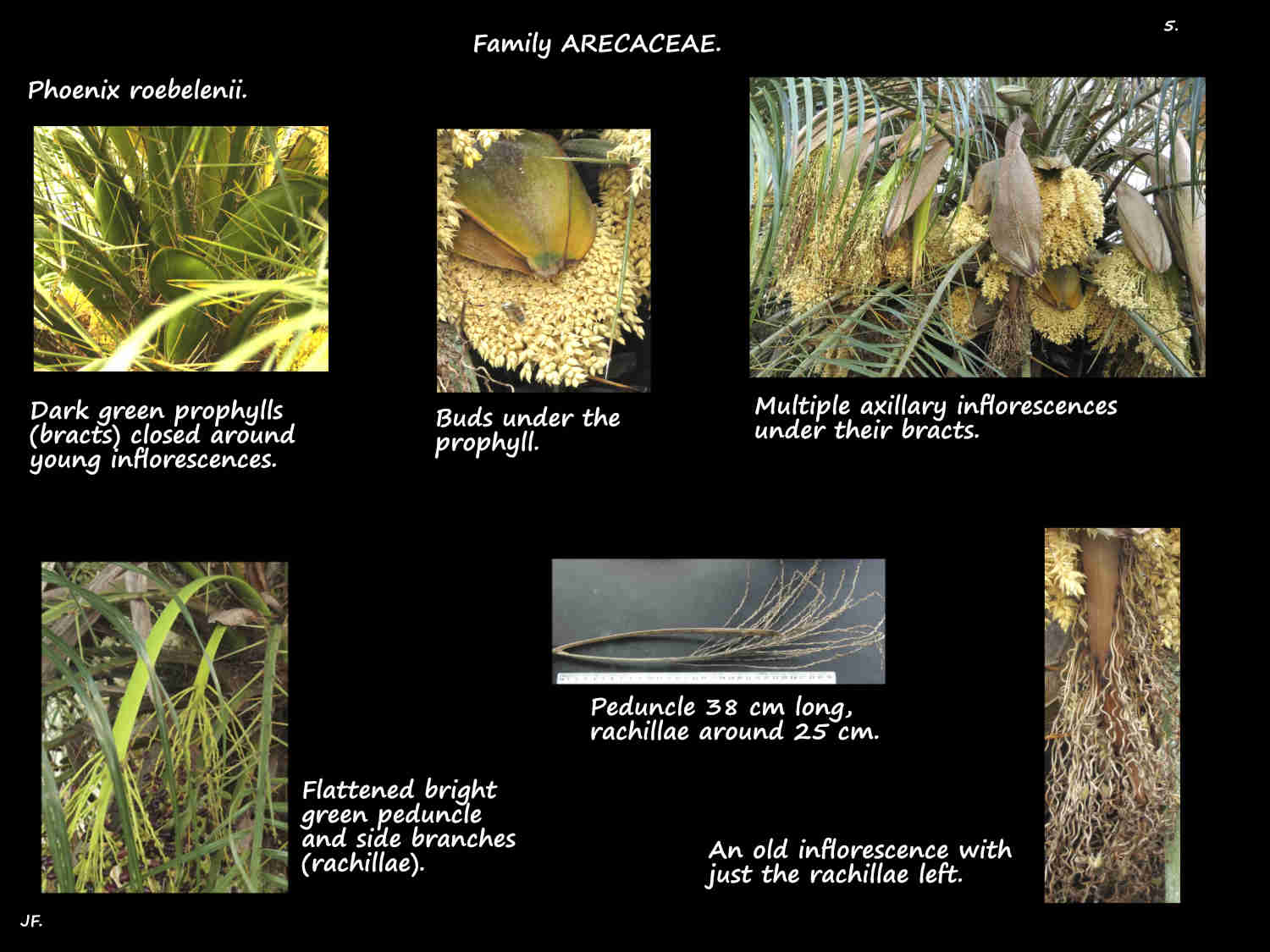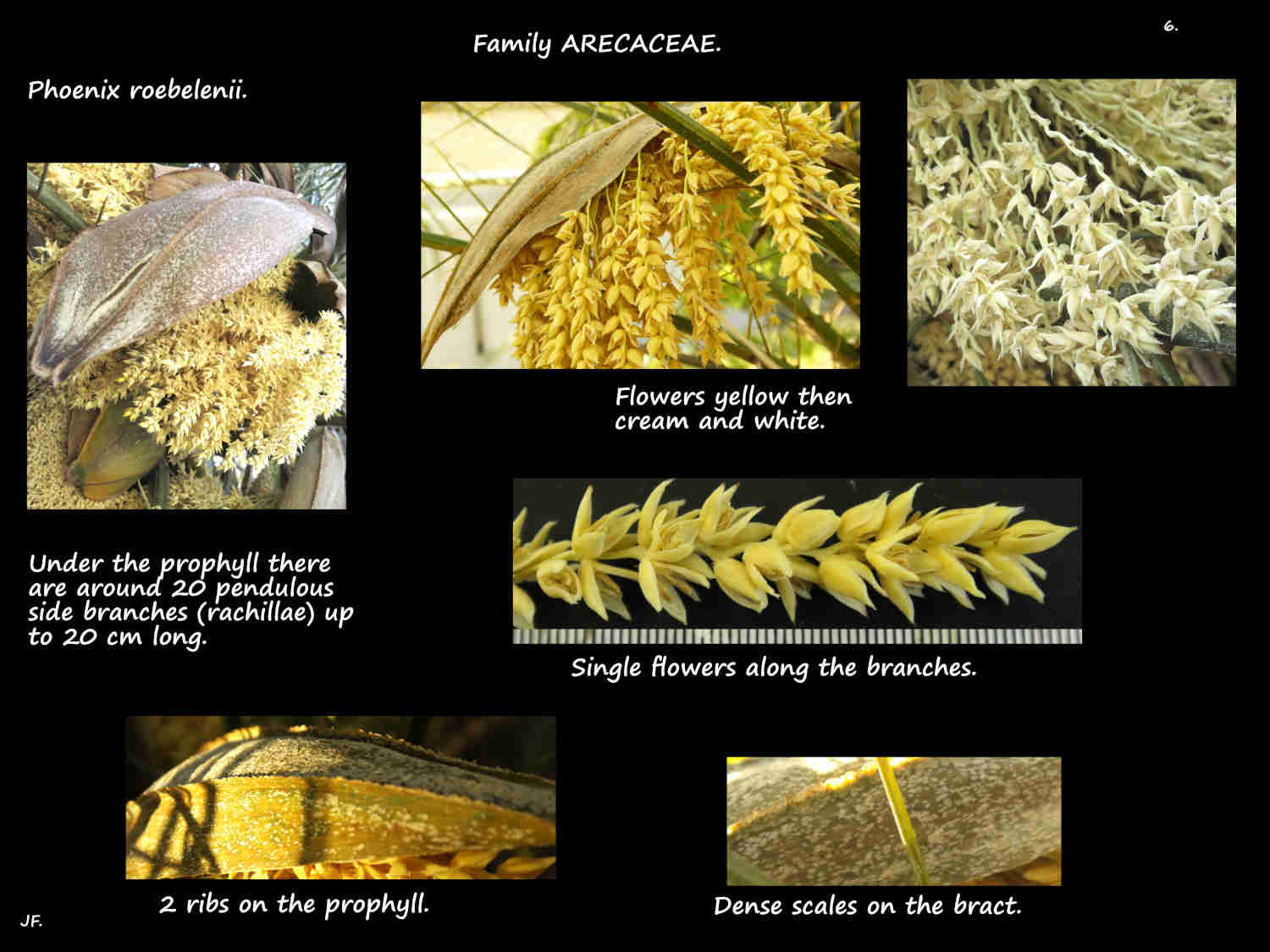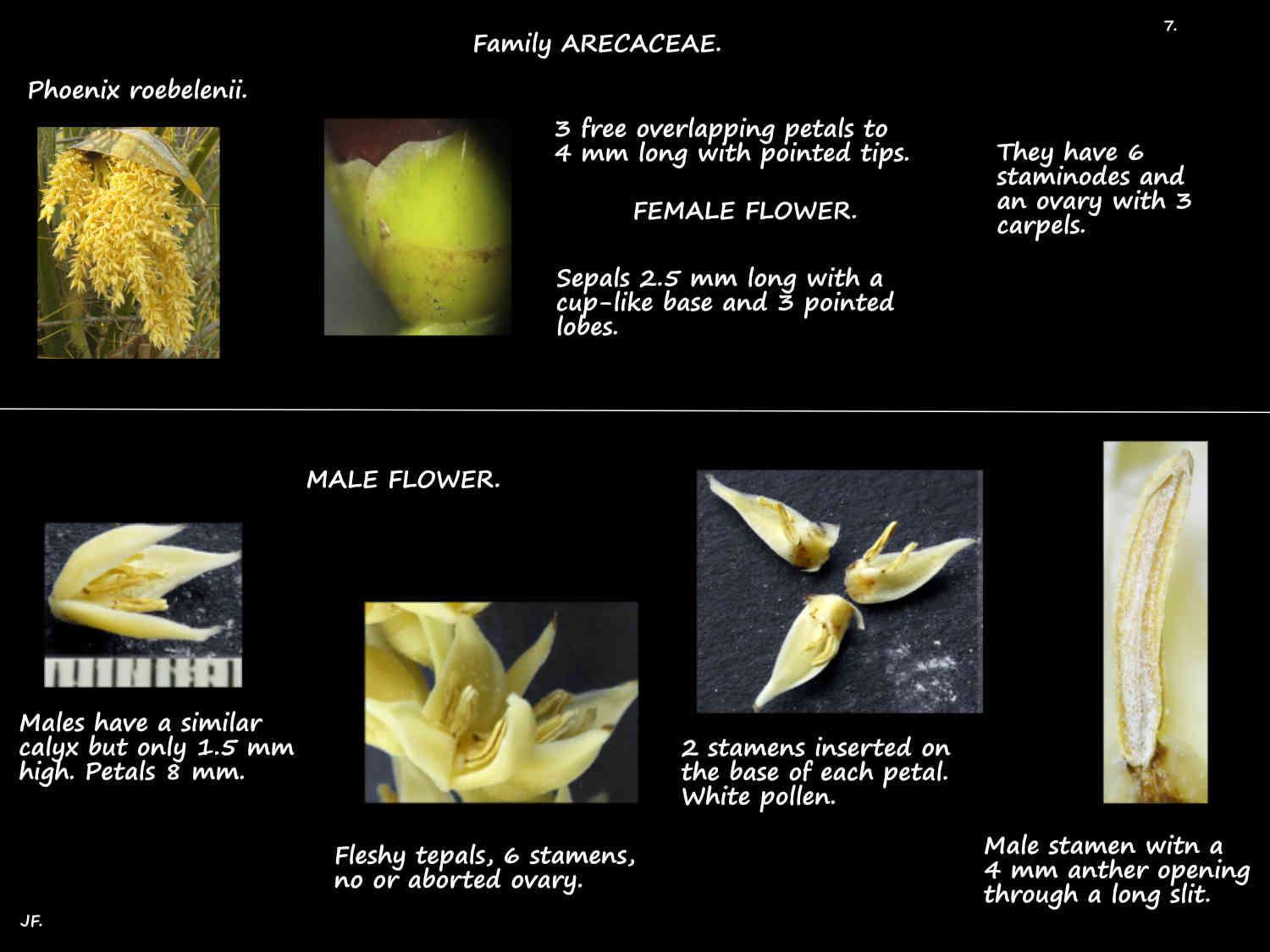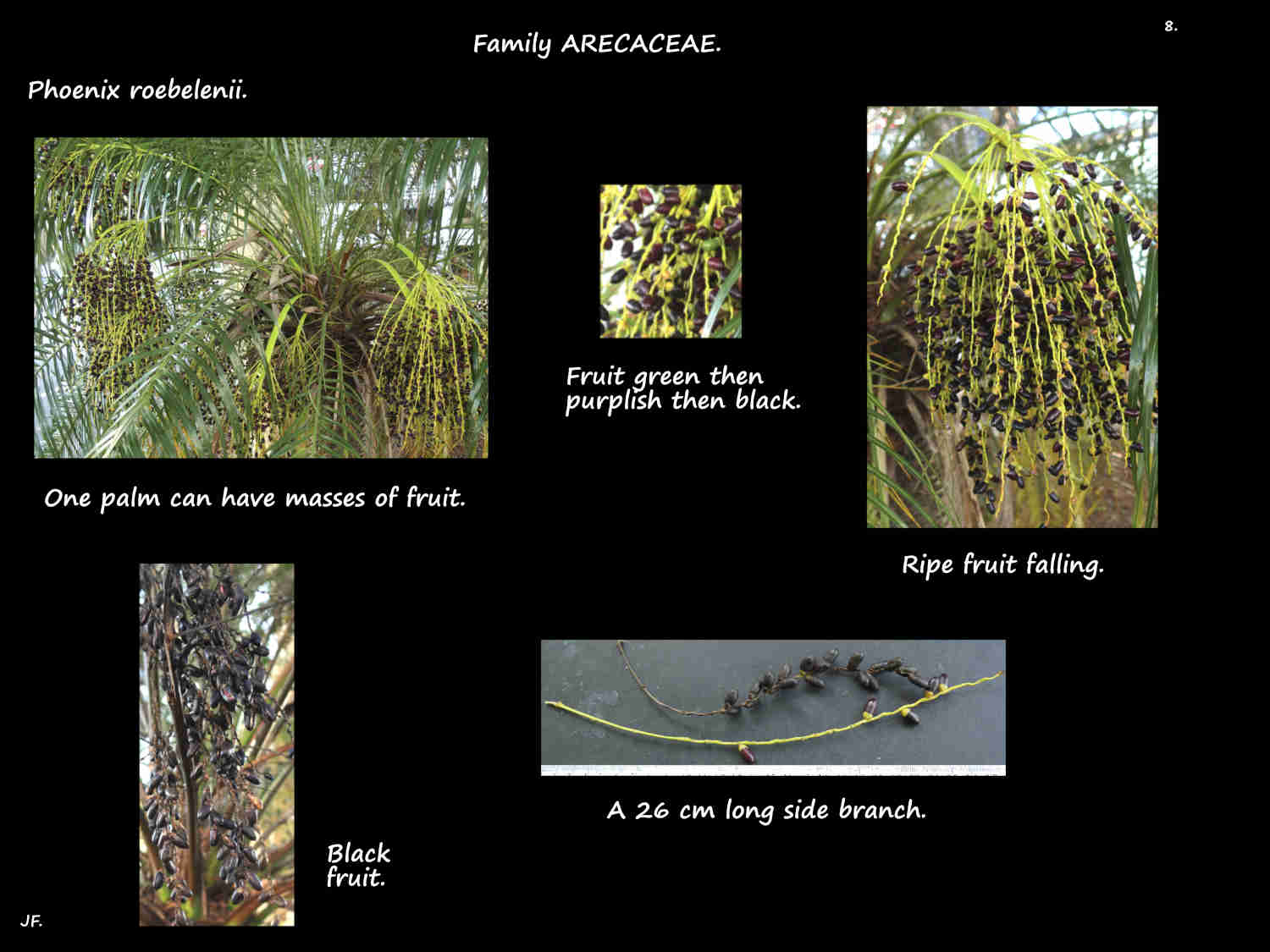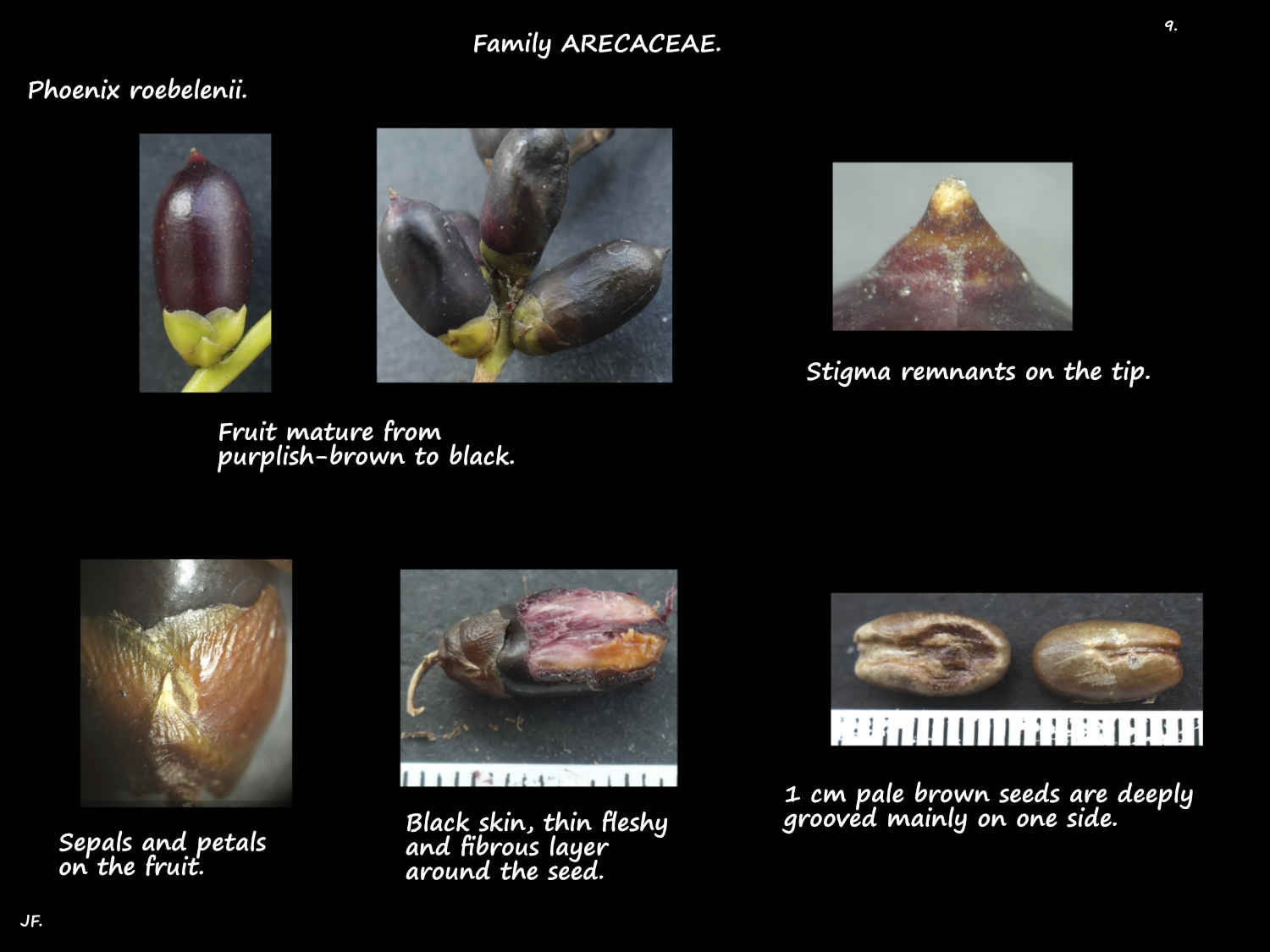The Dwarf date palm is native to Laos.
Seen here as solitary plants they cluster in the wild.
At a shrub-like 1 to 2 (3) m high they are the smallest Phoenix palm.
The straight or twisted trunk is up to 10 cm across.
It is often wider at the base where there may be adventitious roots.
At the top leaf bases and tangled fibres make it around 20 cm or more across.
The close spirally arranged diamond-shaped leaf scars have a central bump.
Older trunks become smoother.
Arching leaves in the crown are up to 2 or 3 m long.
The petiole with the red-brown sheath are around 50 cm long.
The sheaths do not form a crown shaft.
The blades are pinnately divided with an odd terminal leaflet.
Each side of the midrib (rachis) can have up to around 100 leaflets.
The leaflets (pinnae) are opposite but near the tip a few may be sub-opposite.
In the middle of the blade leaflets are up to 40 cm long and around 1 cm wide.
At the end they are around 30 cm long.
The leaflets may be straight but commonly the tips or distal halves droop.
The lower leaflets are modified into spines that point in all directions.
There are 1 or 2 thin sharp green to orange spines at each node.
Depending on the age of the leaf spines are 10 to 20 or 30 cm long.
A few leaflets at the junction with the spines lie in different planes.
Male and female inflorescences are on separate palms.
Male inflorescences.
Pendulous inflorescences are up to 60 cm long with half being the peduncle.
They are once branched with up to 20 rachillae up to 20 cm long.
Young inflorescence are protected by a large bract or prophyll.
Up to 60 cm long it has 2 keels and splits between them to expose the flowers.
Flowers have a calyx around 1 mm high with 3 pointed lobes on a cup-like base.
Pale whitish-yellow petals with pointed tips are up to 8 mm long.
The 6 stamens, on very short filaments have 4 mm anthers opening through long slits.
Female inflorescences.
Erect then arching inflorescences are up to 35 cm long.
The green peduncle is up to 30 cm long.
The prophyll, up to 35 cm long is similar to the male bracts.
The midrib has up to 50 green to orange side branches with swollen bases.
The upper part of these rachillae have no flowers.
Flowers along the rest have narrow 5 mm bracts.
The 2.5 mm calyx has 3 pointed lobes.
The larger pale green petals have pointed tips.
There are 3 carpels but usually only one develops to a fruit.
Fruit, 1 to 2 cm long are ovoid with sepals and petals attached.
The tip has a small point from stigmatic remnants.
Fruit mature from green to a brown with tints of orange or purple then black.
J.F.

